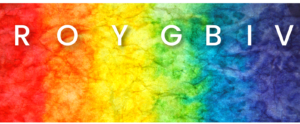Intro the MILD Technique
MILD is an acronym that stands for Mnemonic Induction of Lucid Dreams. It is a strategy for remembering to get lucid (or realize you’re dreaming) during upcoming dreams. This is a tried and true technique developed by Dr. Stephen Laberge while he was working on his Ph.D. dissertation at Stanford in 1979.
Mnemonics
Think of mnemonics as learning techniques. They’re little tricks that help us remember information like the order of events or how to do a task.
A mnemonic device is a learning technique that helps people retain information and remember it in the future. Mnemonic devices like acronyms are commonly used to help people remember sequences or order of operations. Here are two common examples of acronym mnemonics:
- P.E.M.D.A.S. represents the mathematical order of operations: Parenthesis, Exponents, Multiplication, Division, Addition, Subtraction. But because people are more familiar with phrases like “Please Excuse My Dear Aunt Sally”, that phrase is taught to children learning math to make the rules easier to remember.
- Roy G. Biv represents the sequence of colors in the visible light spectrum, Red Orange Yellow Green Blue Indigo Violet.

Now, those are mnemonic DEVICES. But the word mnemonic as an adjective (a descriptor) just means “A technique for remembering something in the future”.
For example:
If you meet someone new and you don’t want to forget their name, you could use the mnemonic technique of saying their name out loud a few times like this:
“Hey Tony, nice to meet you Tony. Tony, that’s a great name Tony!”
It sounds obnoxious, but you can bet you’ll remember Tony’s name the next time you see him! So, that is a mnemonic technique for remembering to remember something in the future. This is how you engage your prospective memory – the type of memory needed to remember that you’re dreaming during a dream.
So, how does the MILD technique actually work to induce lucidity during dreams?
Let’s use the above example as an analogy. When you first met Tony, you thought to yourself, “I always forget names and it’s embarrassing. I want to remember this guy’s name the next time I see him. I’ll try this technique”. So you try it, and next time you see him, you think “Ah-Ha! That’s Tony! That technique worked!”
This is how the MILD technique works for lucid dreaming. You think, “I never realize I’m dreaming during my dreams and I really want to change that. I want to have a lucid dream the next time I’m dreaming. I’ll try this technique”.
How to do the MILD technique for lucid dreaming
The MILD method is all about planning.
You know in the future you’ll be asleep, and at some point during sleep, you’ll be dreaming. The problem is usually when you’re dreaming you have no idea you’re dreaming. So, what you want to do is plan on realizing you’re dreaming during your dream. There are many ways to map out your plan and there are actually some ideal times of day to reinforce this plan.
Here are my simplified steps to the MILD method:
Step 1. Commit
Clearly set your intention to become lucid and genuinely commit to this intention. To reinforce your intention, you could write down an affirmation or say one to yourself silently or even out loud.
The affirmation would be something along the lines of, “The next time I’m dreaming, I will realize I’m dreaming”.
Say it like you mean it, don’t just think it will happen, know it will. The more earnest your commitment, the more likely it will be that your prospective memory follows through and you realize you’re dreaming during your next dream.
Step 2. Rehearse
After you have set a crystal clear intention to get lucid, you’re going to take it to the next step — visualizing it. Take some time to relax, focus, and mentally envision yourself getting lucid in your next dream.
Picture yourself in a boat, on a river, with tangerine trees and marmalade skies… 
You can pick any dreamscape, scene, or situation to visualize, but make sure you picture yourself actually getting lucid — that’s the most important part.
See yourself having that ‘Ah-ha!’ moment and exclaiming “I’m dreaming!”. This is the critical moment in which your prospective memory pulls through and you remember what you wanted to remember: that you are dreaming.
Visualizing is a great exercise for lucid dreaming because it’s actually a form of dreaming. By mentally visualizing and rehearsing the kind of dream you want to have (a lucid one), you’re practicing a form of intentional, deliberate daydreaming — you could even call it “lucid daydreaming”.
By visualizing and rehearsing the moment of attaining lucidity, not only are you priming your prospective memory, but you’re also developing your ability to produce and work with mental imagery — a skillset with many many benefits in itself, and one that is powerful for inducing lucid dreams.
Step 3. Repeat
Memory thrives on repetition, so use that fact to your advantage. The goal is to remember to realize you’re dreaming and if this doesn’t happen naturally for you, repetition is a MUST.
Repeat steps 1 and 2: setting your clear intention AND visualizing lucidity.
For step 1, repeat your affirmation like a mantra — “I will get lucid, I will get lucid, I will get lucid” Or whatever phrase you like. For step 2, when you first start visualizing and picturing what you want to happen in your dreams you won’t be that good at it. So practice visualizing the same dream scene, especially that moment when you realize you’re dreaming and achieve lucidity.
If you want to learn more about how to lucid dream, check out this article. Also, in the app, in the session on Prospective Memory, we dive deeper into this technique and how to incorporate it into a lucid dreaming practice.
The above “How to” steps are my refined version of the MILD method, but there are different variations to the technique. For example, one great exercise is re-writing non-lucid dreams you’ve had and changing them to lucid dreams. Just as you would in step two, only this way, you actually get it down on paper. Give it a try!
Best times of day to practice MILD
MILD is most effective when practiced during certain times of the day, and more importantly during certain states of consciousness. The three best times to practice MILD are as follows:
1. Practice MILD during the Wake Back to Bed (WBTB) technique
This is the BEST possible time to practice MILD and here’s why — When you wake up before your final REM period, your body is “hungry” for more REM sleep. It was about to start a 45(ish) minute long REM period AKA dream period but because you woke up, you interrupted that process.
While you’re awake, if you spend that time practicing MILD, you’re priming your mind to get ready for lucidity when you go BACK to bed and allow that REM period to begin.
In other words, by practicing MILD in the wake period before sleep, you’re creating a path of least resistance at the time of maximum drive for REM sleep.
2. Practice MILD as you’re falling asleep
Sleep is important! So, if you don’t want to disrupt your sleep to practice WBTB, that’s totally understandable and reasonable. You still increase your chances of having a lucid dream if you practice MILD as you’re falling asleep in bed.
The transitional phase as you fall asleep is called the hypnagogic state. This is a liminal state of consciousness between fully awake and fully asleep. If you can set clear intentions to get lucid during this state, you’re much more likely to achieve that goal.
Further, if you can visualize lucidity while you’re practicing MILD in the hypnagogic state you might just induce a WILD (Wake Initiated Lucid Dream).
3. Practice MILD as you’re waking up
Though you won’t induce lucidity at this time, you will set yourself up for success if you practice MILD in the hypnopompic state — the ‘in-between’ phase of consciousness as you transition from fully asleep to fully awake in the morning.
I recommend practicing the MILD technique when you first wake up because mentally, you’re much closer to the dream state than when you get out of bed and fully wake up. These liminal states are a bridge between dream life and waking life making them ideal for practicing lucid dreaming.
Now that you know how to practice the MILD method, what do you think? Let us know in the comments, feel free to ask questions (we will respond!), and make sure to get the Mind Awake app to learn more about lucid dreaming and how to practice Mindfully!
